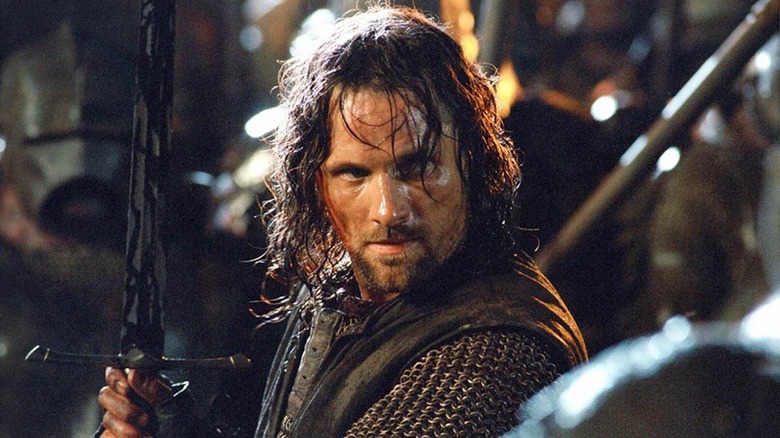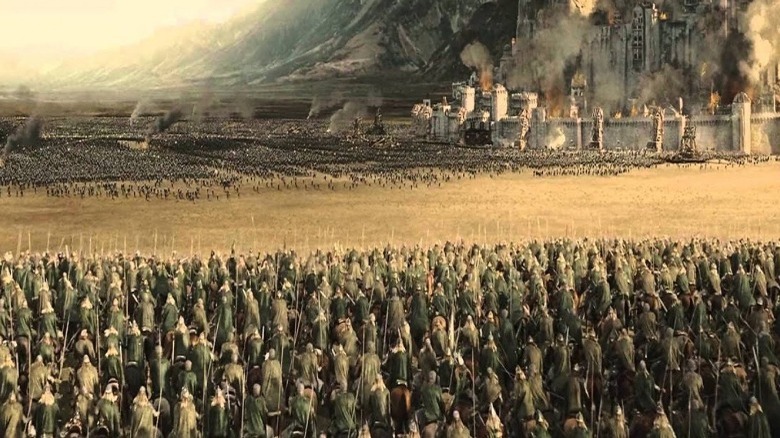The Missing Aragorn Moment Viggo Mortensen Wanted To See In The Lord Of The Rings
"The Lord of the Rings" films were a bit of a miracle, faithfully adapting J.R.R. Tolkien's epic, sweeping tomes into a trilogy that makes up one long but totally comprehensible story. All the while, director Peter Jackson managed to incorporate important details of Tolkien's original lore to flesh out the history of Middle Earth. Still, the sheer scope of the story meant that not every footnote could be included in the films, though which dropped reference is the most tragic is up for debate amongst Tolkien heads. For one fan named Viggo Mortensen, the King of Gondor himself, it's the moment when Aragorn and the Riders of Rohan ally with the Drúedain at Minas Tirith.
For those unfamiliar with the specificities of Middle Earth, the Drúedain are Wild Men who live in the rugged Drúadan Forest, far away from the more "civilizied" men of the Kingdoms of Gondor and Rohan. Despite their separate language and culture and their Dwarf-like stature, the Drúedain descend from Hildorien, the birthplace of all the creatures in Tolkien's creation myth. They were also counted among the Edain, the group who sided with the Elves against the evil Morgoth in the pre-"Lord of the Rings" time known as the First Age. However, the Drúedain went their separate ways after migrating to the west, living a mysterious and isolated life in the Drúadan Forest, separate from more formal settlements like Minas Tirith and Edoras.
The return of the wild men
The Battle of Pelennor Fields is arguably the most memorable set piece in "The Return of the King," in which the cavalry of Rohan come to the aid of Gondor during the storming of Minas Tirith. The Drúedain, led by chief Ghân-buri-Ghân, would have made up a significant third force if Tolkien's original story was replicated exactly. The films already spend a sizeable chunk of time on the relationship between the once-powerful Kingdom of Gondor and the horse-riding Kingdom of Rohan, but in Tolkien's books, Aragorn also helps to re-unite the Drúedain with their former Edain allies, and ultimately regain control of the Drúadan Forest.
Reuniting the Drúedain with their Edain allies is one of the main reasons why Aragorn is such a significant player in the history of Middle Earth. It's also probably why Mortenson picked that moment out in particular. In an interview with "The Lord of the Rings" costar Billy Boyd in Empire, Mortensen said, "I suppose all of that extra material would have given the already thematically complex and quite lengthy movie far too long a running time and an overwhelming amount of information for viewers to easily assimilate." But he surmised that "die-hard Tolkien aficionados" would have enjoyed those scenes.
A live-action portrayal of Ghân, played by the Maori actor Wi Kuki Kaa, made its way to the artwork of "The Lord of the Rings Trading Card Game," implying that Jackson had initially planned on including the character within the films. Considering how much additional Middle Earth lore the director included in the director's cuts of the trilogy's films, however, it's easy to see how the Drúedain were unfortunately but necessarily trimmed in the early stages of story development.

